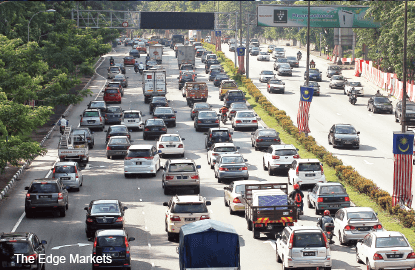
This article first appeared in The Edge Financial Daily, on July 18, 2016.
Automotive sector
Maintain underweight: First quarter of 2016 (1Q16) earnings were generally disappointing as most of our coverage, with the exception of Berjaya Auto Bhd (BAuto), generated poor results below expectations. DRB-Hicom Bhd, MBM Resources Bhd, Tan Chong Motor Holdings Bhd and UMW Holdings Bhd were adversely affected by lower sales volumes resulting from sluggish consumer sentiment. In addition, unfavourable foreign-exchange (forex) exposure narrowed profit margins of their respective automotive segment. UMW’s earnings were further aggravated by losses in its equipment and oil and gas segments. Only BAuto generated positive earnings growth with better-than-expected sales of its Mazda flagship models, namely Mazda2, Mazda3 and CX-5 in both the domestic and Philippine markets. Post-results, we maintain all ratings for our coverages, but upgrade the TP for BAauto to RM2.62 from RM2.41 in lieu of better sales expectations. Meanwhile, we upgrade the TP for MBM Resources to RM2.37 from RM2.30, and UMW to RM4.95 from RM4.89, as we roll over our valuations to financial year 2017 estimated earnings. Following this, we downgrade the TP for DRB-Hicom to 76 sen from 80 sen, and Tan Chong Motor to RM1.76 from RM2.15, as we adjust for lower earnings assumptions.
May 2016 total industry volume (TIV) was recorded at 44,669 units, continuing the negative year-on-year (y-o-y) growth trend since January 2016 (-13% y-o-y; +6% month-on-month [m-o- m]). Weaker sales continued to persist due to weakness in consumer sentiment, especially for big-ticket discretionary items. More stringent lending guidelines further worsened the situation as lower approval rates deterred new car buyers. However, we believe the impact of the goods & services tax on consumer sentiment has softened as consumers are becoming more accustomed to the higher price levels for daily expenditures. Our assumption is also backed by the Malaysian Institute of Economic Research’s Consumer Sentiments Index, which recorded 72.9 points in May 2016, from 63.8 in April 2016, indicating the first sign of recovery from passive spending over rising prices. On a m-o-m basis, Proton appeared to lead growth numbers at 13%, which we believe was the result of returning interest from lower-income groups and a lower sales volume base in April 2016. Toyota and Nissan trailed with a 9% growth each, which we believe was likely on similar reasons, but from offering affordable B-segment options (such as Toyota Vios and Nissan Almera). On a y-o-y basis, Mazda was the only marque that displayed improvement with a 9% y-o-y growth, likely driven by the rising popularity of its flagship models, the Mazda2, Mazda3 and CX-3. Proton declined the greatest in y-o-y terms by 39% as the Proton Iriz, which was highly popular in May 2015, could have lost interest from buyers.
We are counting on new model launches in the second half of 2016 (2H16) to stimulate the sector. While challenging economic conditions and rising cost of living have been mainly attributed to weakness in the sector, a lack of new models by the major marques, such as Toyota, Proton and Perodua, up until now is also not helping to stimulate buying interest. However, we believe our national marques will see some much-needed boost in unit sales with the recent unveiling of the new Proton Perdana, the upcoming rebadged Suzuki Ertiga MPV by Proton, and the new Perodua Bezza sedan in 2H16.
Other forthcoming model launches, such as the new Honda Civic, BRV, facelift City, Jazz and Accord, diesel engine models from Mazda, and the new Toyota Hilux, Fortuner, Innova and upgraded Vios, are anticipated to attract consumers back to the automotive market. Year to date, five months of 2016 TIV of 218,101 units comprises 35% of our 2016 forecast of 621,000 units. We maintain our current forecast in anticipation that 2H16 sales will pick up to meet our estimates.
BAuto remains our top pick as we view it as a rose among the thorns, given its targeted customer base in the middle- to high-income bracket that is less sensitive to the rising cost of living.
More positively, the recent management buyout could also remove the overhang on its shares, while a positive knee-jerk reaction could be reflected in the share price in the foreseeable future. All in, we are still optimistic about its investment merits, supported by: i) better growth prospects from a low base, on the back of a strong pipeline of exciting models; ii) relatively stable margins benefiting from lower import duties under the free-trade agreement with Japan; and iii) a potential dividend payout of approximately 70%, which translates into a fair dividend yield of approximately 7.8%. BAuto is currently trading at an undemanding valuation of 11 times forward price-earnings ratio (PER), which is below the industry’s average forward PER of 20.1 times. Risks to our call include: i) adverse forex exposure to the yen; and ii) weaker-than-expected automotive sales. — Kenanga Research, July 15